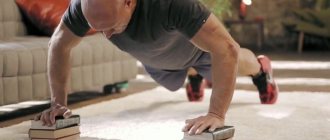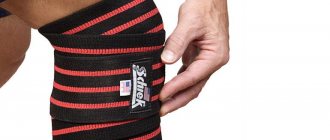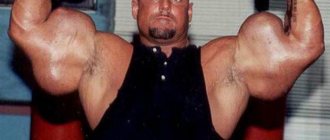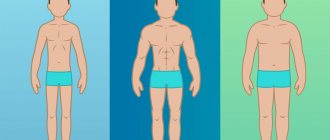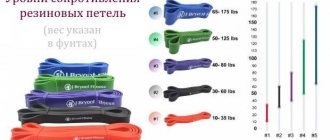A wristband is a fashionable and interesting sports-themed accessory. But recently it has become popular among people who do not connect their lives with sports. It is a bandage that is worn on the arm closer to the wrist. The wrist band can be made of any materials: from leather to knitwear. Very effectively emphasizes individual style or taste preferences, for example, with the symbols of a musical group or football team. But why are wristbands needed, what are their functions?
What are wristbands for?
Wide bracelets made of fabric or leather are worn on the wrist, covering the area where the pulse can be felt. This is necessary for different purposes, depending on the types of load and materials. But do not confuse wristbands with elastic bandages , with which you can control the degree of fixation of the joint, sometimes making it immobile, for example, after injuries or during acute inflammation. Knitted or terry wristbands gently fit the joint without impairing its mobility or pinching the wrist. One of the advantages of such bracelets is considered to be the prevention of injuries, in which wristbands supposedly reduce the risk of sprains and dislocations. This is controversial, since the width and degree of fixation will not be able to prevent injuries due to incorrect movement technique, for example, hitting with a racket or when performing a barbell press with an incorrect position of the hand. But with leather bracelets everything is different.
Let's look at the true beneficial properties of wristbands for sports:
- Absorbs sweat. The main use of jerseys is to quickly eliminate sweat from the face with one movement of the hand, without interruption during training or competitions, when sweat literally floods the eyes. Such wristbands are often used in fitness, during aerobic training, for example, step, where fixing the wrist is absolutely not necessary, but continuous movement, in which you need to remove sweat without stopping from the process, is a necessity.
- Warming the joint. Wristbands made of fabric are able to maintain a stable temperature in the joint. When performing exercise in a cold room or outdoors, the bracelets will warm the joint and ligaments, preventing rapid cooling during short rests between exercises.
What are they for?
Have you been trying to heal your JOINTS for many years?
Head of the Institute for the Treatment of Joints: “You will be amazed at how easy it is to cure your joints by taking the product every day for 147 rubles...
In order to most easily explain why wristbands are needed, we need to draw an analogy with knee pads. Initially, these strips of tissue were applied to stabilize joints during serious injuries. Such fixation made it possible to properly heal a broken bone or carry out prevention so that a person would not accidentally repeat or aggravate his injury.
Subsequently, people appreciated the possibility of fixing one of the most mobile joints in humans - the wrist. Since then, sports wristbands have begun to be used in many areas:
- in music - to reduce friction;
- in the IT field;
- in strength sports, ranging from heavy wristbands for powerlifting to models for football players.
And then, when almost everyone around us started wearing wristbands, they gained a second wind, becoming a fashionable and rather pointless accessory.
Musicians
Why do musicians need wristbands? After all, they don’t experience huge loads, don’t do bench presses, etc. It’s simple. Musicians (mostly pianists and guitarists) strain their wrist joint much more than it might seem. After all, their entire load is transferred directly to the hand. Bypassing even the wrist muscles. In addition, the brush must be very mobile and, most importantly, must maintain a constant temperature.
Otherwise, musicians can get arthrosis of the wrist joints, since they are almost completely worn out during their professional career. Drummers also need such wristbands for the same reasons.
Wristbands are also worn for working in cold conditions. Musicians, mainly those who play stringed instruments, cannot afford to wear gloves in order to fully warm their hands. At the same time, all the muscles of the palm are attached at the level of the wrist, so proper warming and maintaining their temperature can preserve some of the mobility of the fingers during performance.
For programmers
Programmers also constantly feel the need to maintain the correct position of the hand. And here this is not at all due to the fact that they work the joint a lot. On the contrary, the hand on the keyboard is usually fixed in one position. The main problem is that this position is unnatural. Because of this, the hand, without proper fixation, begins to get used to the new position, which negatively affects its health.
For athletes
Everything is more complicated here, since many athletes use wristbands. People involved in strength sports, be it weightlifting, powerlifting, bodybuilding or CrossFit, mainly use hard wristbands in the form of wrist bandages. They allow you to fix the hand in the correct position, stabilize the hand and reduce the risk of injury (in particular, protect against sprains). They are removed between approaches so as not to block blood access to the hands.
For runners, the wristband helps maintain the temperature in the hands, making running exercises more comfortable. Especially considering that hand movements also affect speed.
Another useful detail of wristbands for runners is discussed in the following video:
There are also elastic wristbands that are used in martial arts (for example, boxing). They are made of a special material that allows you to fix your hand in one position, but does not interfere with mobility too much (which cannot be said about bench press wristbands).
Types of sports wristbands
- Terry, knitted, cotton wristbands. They are the most popular in fitness, tennis, and team games (for example, basketball). Their benefit for athletes is primarily determined by their ability to absorb moisture without damaging the skin of the face.
- Leather bracelets. Made from 100% leather and designed for weightlifters and powerlifters. Such products rigidly fix the joint and reduce its mobility, helping to lift heavy weights, lighten the load without injuring the wrist when lifting heavy objects. But these wristbands are not designed to absorb sweat at all.
- Wristbands with bluetooth. Used less frequently by athletes, its main feature is the ability to receive calls without interrupting the training process.
What are they needed for?
Have you been trying to heal your JOINTS for many years?
Head of the Institute for the Treatment of Joints: “You will be amazed at how easy it is to cure your joints by taking the product every day for 147 rubles...
In order to most easily explain why wristbands are needed, it is necessary to draw an analogy with knee pads. In the beginning, these strips of fabric were applied to stabilize joints during severe injuries. Such fixation made it possible to properly heal a broken bone or carry out prevention so that a person would not accidentally repeat or worsen his injury.
In the future, people appreciated the possibility of fixing one of the most mobile joints in humans - the wrist. Since then, sports wristbands have begun to be used in almost all areas:
- in music - to reduce friction;
- in the IT field;
- in strength sports ( VIEW: Literally: That which is visible to the eye
) of sports, ranging from languid wristbands for powerlifting to models for football players.
And then, when almost everyone around started wearing wristbands, they got their second wind, becoming a prestigious and rather meaningless device.
Musicians
Why do musicians need wristbands? After all, they do not experience large overloads, do not do bench presses, etc. It’s simple. Musicians (mostly pianists and guitarists) strain their wrist joint much more than it might seem. After all, all their overload is transferred directly to the hand. Bypassing even the wrist muscles. In addition, the brush must be extremely mobile and, most importantly, must maintain a constant temperature.
In an unpleasant scenario, musicians can get arthrosis of the wrist joints, since they are virtually completely worn out during their professional career. Such wristbands are also necessary for drummers - for the same reasons.
Wristbands ( a bandage placed on the arm near the wrist, usually in the place where the pulse is felt
) are also worn for work in cool conditions.
Musicians, mainly those who play string instruments, cannot afford to wear gloves in order to fully warm their hands. At the same time, all the muscles of the palm are attached at the level of the wrist, therefore their proper warming and maintaining temperature can preserve some of the mobility of the fingers during (a form of physical and mental processes, a condition for the possibility of change
) performance.
For programmers
Programmers also constantly feel the need to maintain the correct position of the hand. And this is not at all due to the fact that they work the joint a lot. On the contrary, the hand on the keyboard is traditionally fixed in one position. The main problem is that this position is unnatural. Why is the hand ( the upper limb of a person, the musculoskeletal system, one of the most important parts of the body
) without proper fixation begins to get used to the new position, which has a bad effect on her health.
For athletes
Here everything is more difficult, since almost all athletes use wristbands. People who specialize in strength sports, be it weightlifting, powerlifting, bodybuilding or crossfit, mostly use hard wristbands in the form of wrist bandages. They allow you to fix the hand in the correct position, stabilize the hand and reduce the risk of injury (in particular, protect against sprains). They are removed between approaches so as not to block blood access to the brushes ( A brush is a tool for painting and painting
).
For athletes involved in running, the wristband allows them to maintain the temperature in their hands, which makes running exercises more comfortable. Individually, if you consider that hand movements also affect speed.
Another necessary detail of wristbands for runners is discussed in the following video:
There are also elastic wristbands that are used in martial arts (for example, boxing). They are made of a special material that allows you to fix your hand in one position, but at the same time does not interfere with mobility (which cannot be said about bench press wristbands).
How to choose wristbands for your wrist?
- Choose wristbands based on the type of activity. If you need to lift heavy weights, consider leather bracelets. An important condition is that the product contains 100% leather. For fitness, opt for soft fabric products that will absorb moisture well. Such wristbands should contain the maximum amount of natural materials, and zero or minimal content of synthetic ones.
- When choosing a product, you need to try it on. The bracelet should not overtighten the wrist so as not to squeeze the blood vessels, causing discomfort and reducing the mobility of the joint. But also, it was not too large, otherwise the warming ability is completely reduced, it is more difficult to remove sweat, since the bracelet rotates, so using the bracelet becomes useless.
Buy.
If you do not have the opportunity to buy a vibration damper, then you can make it yourself. To do this you need to use the following materials.
Felt or foam rubber
Take felt and foam rubber. Make a small thin ball out of them. This is necessary so that the improvised vibration damper fits well between the strings.
Place a makeshift vibration damper on the racket.
A product made of felt and foam rubber will not last long. However, it will still be enough for several games.
Rubber bands for money
A vibration damper can be created from rubber bands that are used to secure money. To do this, you need to wrap two strings of the racket, which are placed vertically. And make a knot out of them. It must be as durable as possible. In order not to lose shape during games.
Homemade vibration damper is ready!
Rubber taken from the inner tubes of a car or bicycle
A vibration damper can be created from the rubber of any technical means of transportation. To do this, you need to take the material from the inner tube of your car or bicycle. And do some manipulations with it.
After you get the rubber, process it. Cut it so that it is as thin as possible. Its width should be minimal. So that you have the opportunity to place rubber between the strings of the racket.
After processing the material, tie the vibration damper. The knot should be as strong as possible. Otherwise, it may become deformed.
With such a vibration damper you can play for a short amount of time.
Major manufacturers of wristbands
- Nike is a world famous brand of fitness clothing and accessories. Makes wristbands from knitwear.
- Wilson is a brand of sports equipment and tennis equipment.
- Babolat is a tennis brand that produces high-quality wristbands for athletes.
- Head – wristbands made of natural materials of various shapes and colors.
- Hvat is a Russian brand that produces leather wristbands designed for weightlifting and other strength sports.
Bottom line
Now you know why wristbands are needed in sports. But the question remains open. What is the optimal wristband that will be ideally combined with classic CrossFit exercises? Consider:
The outer side can be made of any material (including the skin of wild hares).
The fixation should take place using weightlifting bench press bands, but you need to remember that a CrossFitter very often twists his wrist during specific exercises - be it lifting a log, working with a rope - push-ups, etc.
Strictly according to the manufacturer's table with the correct translation.
Not knitted - without heart rate monitors. All these are unnecessary bells and whistles - which do not affect the quality in any way, and sometimes, on the contrary, even harm. So, fasteners will not be able to provide sufficient compression. And knitwear will not provide sufficient fixation when there are 150 kilograms of iron above you.
As a result, very often on the market you have to buy a wristband not from your favorite brand, but from the one that fits best on your hand.
A wristband is a fashionable and interesting sports-themed accessory. But recently it has become popular among people who do not connect their lives with sports. It is a bandage that is worn on the arm closer to the wrist. The wrist band can be made of any materials: from leather to knitwear. Very effectively emphasizes individual style or taste preferences, for example, with the symbols of a musical group or football team. But why are wristbands needed, what are their functions?
Material
The most important characteristic is the material.
Immediately discard the leather wristbands. No matter what anyone says about their benefits, in terms of palm fixation and warmth, modern leather wristbands are no better or worse than the cheapest fabric ones. It is just a fashion accessory that has greater durability.
Note: we are not talking about wristbands made of tanned leather of special thickness, which are used by foreign athletes as bench presses. It is almost impossible to get them on our market, and in terms of effectiveness, they do not particularly enhance the fixation of the wrist joint in relation to the classic ones.
Next on the list are lint (wool) wristbands. This is a universal design that suits almost all categories of people. Its only drawback is insufficient fixation for heavy exercises.
Well, and finally - wristbands made of elastin, elastomer and polyester. All three options perfectly fix and warm the hand in the area of the wrist joint. They are not suitable for constant wear, and are used exclusively during training sets with serious weights.
Size
The second important characteristic that determines the importance of wristbands is their size.
How to choose the right size of wristbands for a person? Everything is very simple - based on the manufacturer’s size grid. Usually they are indicated in letters, and a table of conversions to numbers is given.
The size of the wristband is the circumference of the wrist at its thinnest point (i.e. at the point of attachment to the hand itself).
Unlike knee pads, wristbands must be taken strictly according to size, even bench press ones. It’s all about the size of the joint and fastening. Thus, wristbands of a smaller size and sufficient rigidity greatly block the blood flow in the palms, and this, in turn, does not allow you to feel them well enough during heavy exercise.
Wristbands that are too loose are of no use at all, except for additional heating.
Wristbands should be within +-1cm of the measurement at the narrowest point. Athletes can make an error of 1.2-1.5 centimeters, since in the process of working in the gym, their hands swell under the flow of blood (see Pumping).

